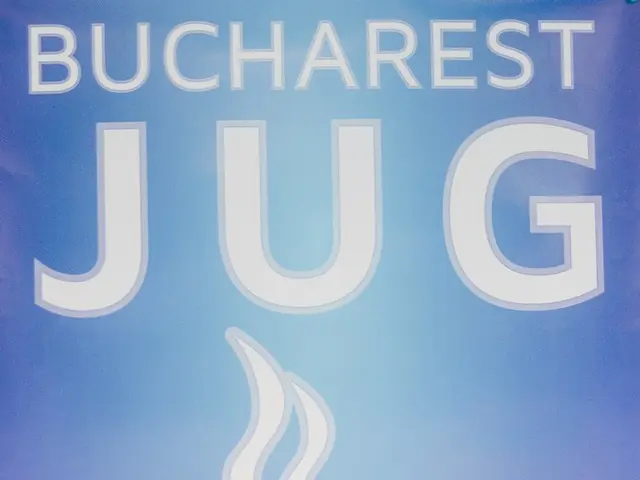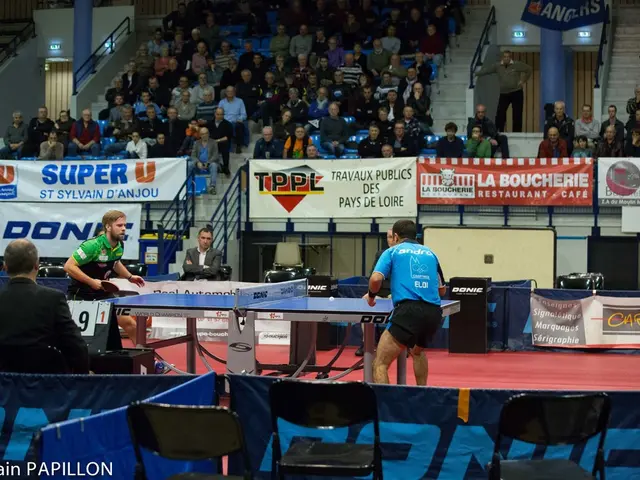Exploiting varying card strengths in 3-bet situations: An analysis of poker hands
Alright, folks! Today's blog will dive into three-bet pots played by site players. It's essential to focus on these pots because they have larger sizes, high frequency, and a significant impact on winrate, making them crucial for consistent profits over time. Let's discuss some expert-reviewed hands to help you up your game.
Pocket Aces Vs BroadwayQuaattrroo shared this hand for review:
- Was the preflop play too wide?
- Optimal postflop play?
The opponent's stats: 2k hands; 20% 3-bet vs BU; AGQ around 50% on streets. No further information provided.
Expert ZMN's Commentary:PREFLOP: A decent call of the 3-bet. Low 3-bet size and wide range are plus points. However, the 140bb stack depth might favor continuation with pocket hands due to advantages in playing drawing hands.
FLOP: A questionable call due to the opponent's bet size. A raise would have been a better move in this situation. Since the opponent's aggression is high, we can extract value and fold out stronger hands, also having backdoor equity and a gutshot. A raise in the 40-45bb range is ideal.
Against aggressive opponents, remember they are vulnerable to raises, and we can bluff and take down bluffs in their range.
TURN: A good bet, but slightly smaller would be better for setting up a more aggressive river bet.
RIVER: A mandatory bluff, which Hiro executes. We need to fold out many of the opponent's paired hands, some of which are vulnerable to our bet.
Folding to a 3-bet
The given opponent is a non-aggressive regular with few hands played.
Expert ZMN's Comment:PRE-FLOP: Nice 3-bet with proper sizing!
FLOP: Nice c-bet! It's smart to value bet hands before they get too dirty. General advice is to c-bet wide in this structure.
Calling the opponent's raise is a good play, as there are several weaker overpairs in their range, although stronger hands are also present. Rushing to shove isn't wise, as there are few bluffs that shouldn't be interfered with. Our hand isn't overly vulnerable, and dragging it out is a reasonable play.
TURN: Nice check! I hope there was a call on opponent's shove. Remember that the field loves overplaying overpairs. However, pocket 8s rarely 4-bet in early positions and can easily be shoved into on this turn. If our opponent plays this hand and a small number of draws, the call becomes highly profitable. If they rarely bluff and sometimes shove pocket 8s, the call is near zero or slightly profitable. Overall, it's a call that's slightly to moderately profitable.
Pocket 88 vs. Kamikaze
Reptarius shared this hand for review:
- Optimal post-flop play? I think it's hard to find a fold pre-flop, although it might be frequency-wise.
Expert ZMN's Comment:OPPONENT: Super wild around-reg with uncontrolled aggression in many lines. High 3-bets. Lacks fold equity on post-flop. Fights to the end in hands. Loves to raise.
PRE-FLOP: Nice isolation and sizing! Against a wide 3-bet from this opponent, a call is mandatory to maintain winrate on the long run.
FLOP: Nice check! No need to provoke aggression with our hand. As we’re not enthusiastic about playing it on the turn, we should give the opponent a false hope of an easy money extraction.
TURN: Nice call! No reason to raise. It's not essential that we give them some weaker hands to realize. Even after strengthening some of them, their river betting range will remain weak due to numerous bluff candidates. And this opponent can't resist the temptation to bluff.
RIVER: The opponent uses an unpleasant bet size. The issue is that unusual opponents usually have a wild overbet in a larger size. However, this fact shouldn’t mislead us, as even a super aggressive opponent will have more than 20% of weaker hands in this bet. Hiro makes an absolutely correct call. Winning just once out of four in such a situation already results in significant wins on the long run.
Navigating three-bet pots successfully involves careful planning, adaptation, and understanding the underlying strategies, as given in the enrichment data below.
Understanding 3-Bet Pots
A 3-bet pot occurs when a player raises, another player re-raises, and someone calls or re-raises again. These pots are often larger and more aggressive.
Post-Flop Strategies
1. Board Texture Analysis
- Understanding Board Textures: Analyze the flop for board textures that might favor your range over your opponent's. For example, if you have more pairs and draws than your opponent, you might be more inclined to play aggressively on a draw-heavy board.
- Dry Boards vs. Wet Boards: Be cautious on dry boards where your opponent might have a strong hand, but be more aggressive on wet boards where you have potential draws or strong hands.
2. Balancing Your Range
- Mixed Range: Maintain a balanced range of hands, including value hands, bluffs, and semi-bluffs.
- Minimum Defence Frequency (MDF): Ensure you’re defending enough to prevent your opponent from profiting too much from bluffs.
3. Bet Sizing and Pot Control
- Bet Sizing: Optimize bet sizes based on your opponent's aggression level. Larger bets can be used to build the pot with strong hands or to deter bluffs, while smaller bets can extract value from weaker opponents without scaring them off.
- Pot Control: Manage the pot size to avoid committing too many chips with uncertain hands.
4. Adapting to Opponent's Aggression
- Profile Your Opponent: Understand whether your opponent is three-betting wide or mostly with strong hands.
- Adjusting to Aggression: If they three-bet wide, you might need to tighten your range when calling their bets. If they only three-bet strong hands, consider more aggressive play pre-flop to narrow their range.
5. Managing Position
- Position is Key: If you're out of position, be more selective with your range. In position, you have more control over the post-flop actions and can react based on your opponent's moves.
6. Continuation Betting (C-betting) and Check-Raising
- C-betting Frequencies: Consider C-betting less often against aggressive opponents who might call or raise more frequently. This helps prevent them from getting a free card or building a pot with a weak hand.
- Check-Raising: Use check-raises as a tool to build pots with strong hands while disguising them as bluffs.
By employing these strategies, you can effectively navigate three-bet pots and counter aggressive opponents in Texas Hold'em. Good luck, keep learning, and adapt to become a better player!
[1] Gambling.com article on bet sizing
[2] MinDefStudios article on Minimum Defence Frequency (MDF) calculation
1.In the reviewed hand, it's suggested that against a wild opponent with uncontrolled aggression, a call in a three-bet pot preflop is mandatory to maintain a winrate in the long run.2. In a three-bet pot, the optimal post-flop strategy can involve maintaining a balanced range of hands, check-calling to give an opponent a false hope of easy money extraction, and adjusting bet sizes based on the opponent's aggression level to build the pot with strong hands or deter bluffs.3. The FLOP strategy in three-bet pots involves analyzing board textures carefully, with a note to be cautious on dry boards and more aggressive on wet boards.4. Three-bet pots usually display larger sizes and aggressive action, making them crucial for consistent profits in poker, especially in three-bet games and online casino-and-gambling sites offering poker and sports games.5. Smartphones and technology have significantly impacted the accessibility and popularity of online casino-games like poker, as players can now take their games on the go, using various gadgets like smartphones.6. While navigating three-bet pots, it's important to balance one's range, adapt to an opponent's aggression, and manage position, otherwise finding oneself vulnerable to losses in high-stakes games like poker.





